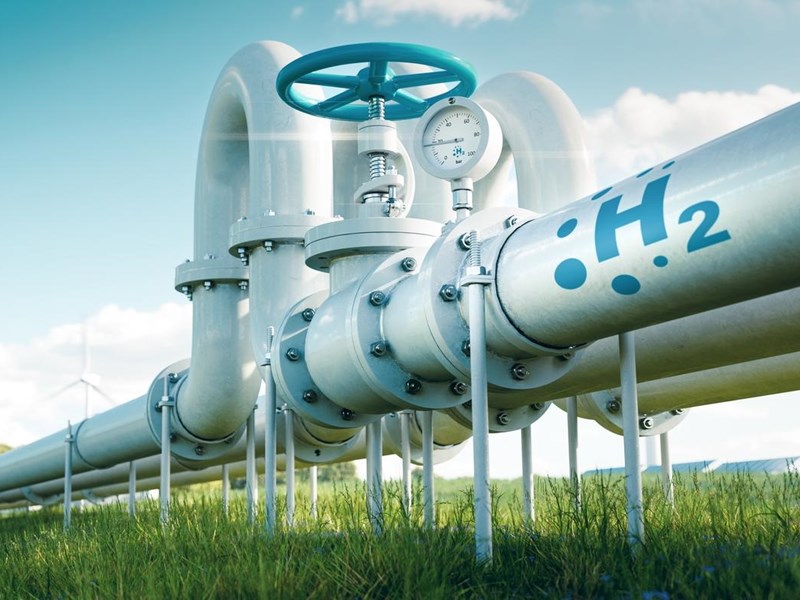Discuss your challenges with our solutions experts
Our top takeaways from the Hydrogen Conference 2023
Last week in London, we hosted the Wood Mackenzie Hydrogen Conference 2023, which shone a light on the most pressing challenges and opportunities in the hydrogen space. From reconciling supply and demand to growing electrolyser efficiency, we recap some of our biggest learnings from the event
3 minute read
Murray Douglas
Vice President, Hydrogen & Derivatives Research

Murray Douglas
Vice President, Hydrogen & Derivatives Research
Murray is responsible for Wood Mackenzie’s global coverage across the hydrogen value chain.
Latest articles by Murray
-
Opinion
Hydrogen: the outlook to 2050
-
Opinion
Our top takeaways from the World Hydrogen Summit
-
Opinion
eBook | The hydrogen opportunity from now to 2050: what utilities and developers need to know
-
Opinion
eBook | The hydrogen opportunity from now to 2050: what industrial players need to know
-
Opinion
eBook | Investing in hydrogen from now to 2050: what you need to know
-
Opinion
What lies ahead for hydrogen and low-carbon ammonia?
On the 20th September 2023, our analysts sat down in London with leading minds in the hydrogen space to explore the key drivers and challenges of deploying low-carbon hydrogen.
Here are some of our top takeaways from the event:
1. Jumpstarting the hydrogen market
The challenge of reconciling supply and demand remains one of the largest challenges in scaling up the low-carbon hydrogen sector. The incumbent hydrogen producers (AirLiquide, Air Products, Linde) and energy majors are each taking different approaches to advancing low-carbon penetration.
Sebastien Bruna of TotalEnergies spoke of the recent announcement to tender for 500,000 tonnes of green hydrogen per year. Having set a goal to decarbonise its European refineries, TotalEnergies will produce its own green hydrogen and supplement this with hydrogen produced by external suppliers.
The desired result is to bring about a ‘step change’ in the European low-carbon hydrogen market and break the pattern of announcing capacity while demand remains sluggish and typically small-scale. A tender of such scale aims to support a large amount of capacity in taking FID and will encourage competition between prospective suppliers.
Our upcoming Majors Benchmarking report will explore how the Majors are approaching low-carbon hydrogen, highlighting the challenges and opportunities they will face.
2. The growing importance of electrolyser efficiency
Rick Beuttel of Bloom Energy emphasised the importance of electrolyser efficiency in reducing the costs of electrolytic hydrogen. Electricity costs remain the largest component in determining the LCOH. Anything that can help reduce that electricity requirement will have the largest impact on cost reduction.
In Europe, Wood Mackenzie’s Power & Renewables Research has modelled the LCOE of onshore wind and solar PV increasing 33% and 20% respectively. Those costs are expected to increase another 5-20% by the end of this year.
Opting to deploy higher efficiency electrolysers, such as SOEC, ahead of ALK or PEM, can help to manage electricity costs. However, higher efficiency electrolysers generally come at higher costs. Developers must consider the trade-off between capex and opex during project design, meaning electrolyser technology should be selected based on project-specific characteristics. Increased efficiency may not always represent the financially optimal pathway for minimising LCOH.
3. The willingness of offtakers to pay a greening premium
In markets with a sufficient willingness to pay, near-term demand is on the rise. H2 Green Steel aims to take FID on its Boden facility by the end of the year and has signed agreements with offtakers, such as Mercedes-Benz, Scania, Cargill, IKEA and Volvo Group. These offtakers have strong commitments to reducing their carbon footprint and, in many cases, even relatively high premiums on the steel (up to 30%) can be absorbed into finished products.
However, the scale of demand from such end-use sectors is uncertain. Early enthusiasm could wane, and the size of the green premium associated with these products might shrink as competition from low-carbon hydrogen projects grows.
Further, in the panel discussion on the consideration of low-carbon ammonia into the conventional use market, there was much discussion around the lack of green premium in nitrogen-based fertilisers. Indeed, finding offtakers for low-carbon products in hydrogen’s largest market today remains a considerable challenge.
4. The importance of connective factors
Panellists reiterated the importance of connective factors for a project to reach FID. If hydrogen production is to scale, then expansive and well-designed supporting infrastructure must be put in place to enable this. Without this, the use-case for hydrogen in many potential end-use sectors breaks down. Matias Saettone of Chevron New Energies stressed this point, highlighting the ACES project being developed by Chevron which will deploy large-scale storage and supply hydrogen for power generation. Widespread storage capacity of a similar scale will be key to unlocking hydrogen’s potential as a source for power generation.
Likewise, underdeveloped transport networks will hinder the growth of the industry. Hydrogen pipelines will be required to connect geographically disparate end-users with production clusters and import terminals such as the Port of Antwerp-Bruges.
Furthermore, with ammonia being an important vector for meeting the EU’s 10 Mtpa hydrogen import target by 2030, ammonia cracking and transport infrastructure will also need to be developed.
As well as ammonia, Tatsuya Yamamoto of Mitsubishi Corporation outlined the promise of Liquid Organic Hydrogen Carriers that Mitsubishi has in development. A key advantage being that it is liquid at atmospheric pressure and storage.
The industry is yet to align around a preferred molecule, and many will remain molecule agnostic for the foreseeable.
Learn more
If you’re interested in learning more about the challenges and opportunities around hydrogen deployment, please click here to download our recent ebook; ‘Overcoming the challenges around hydrogen deployment’.







